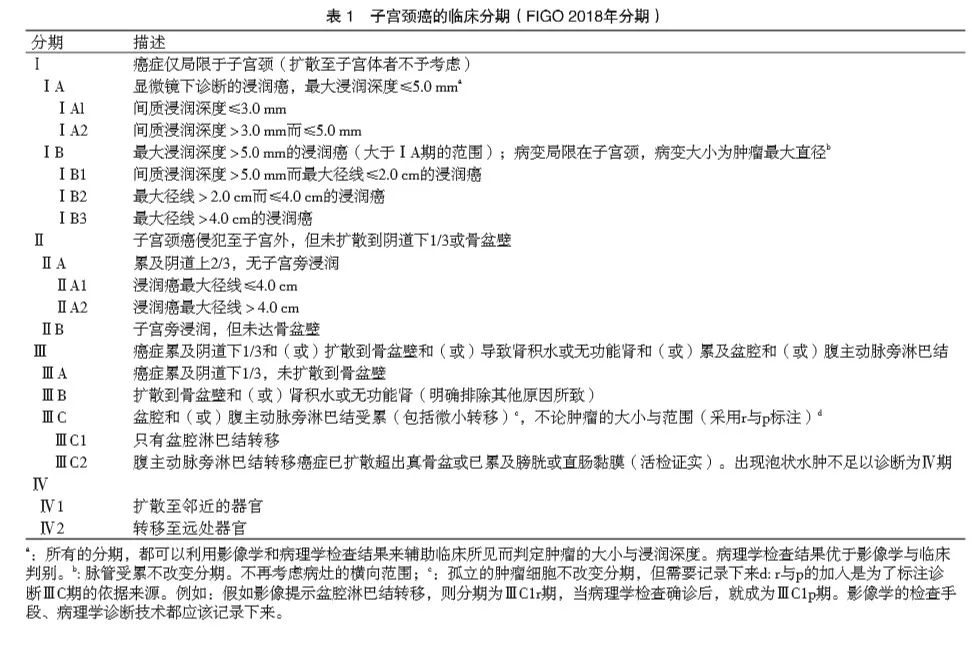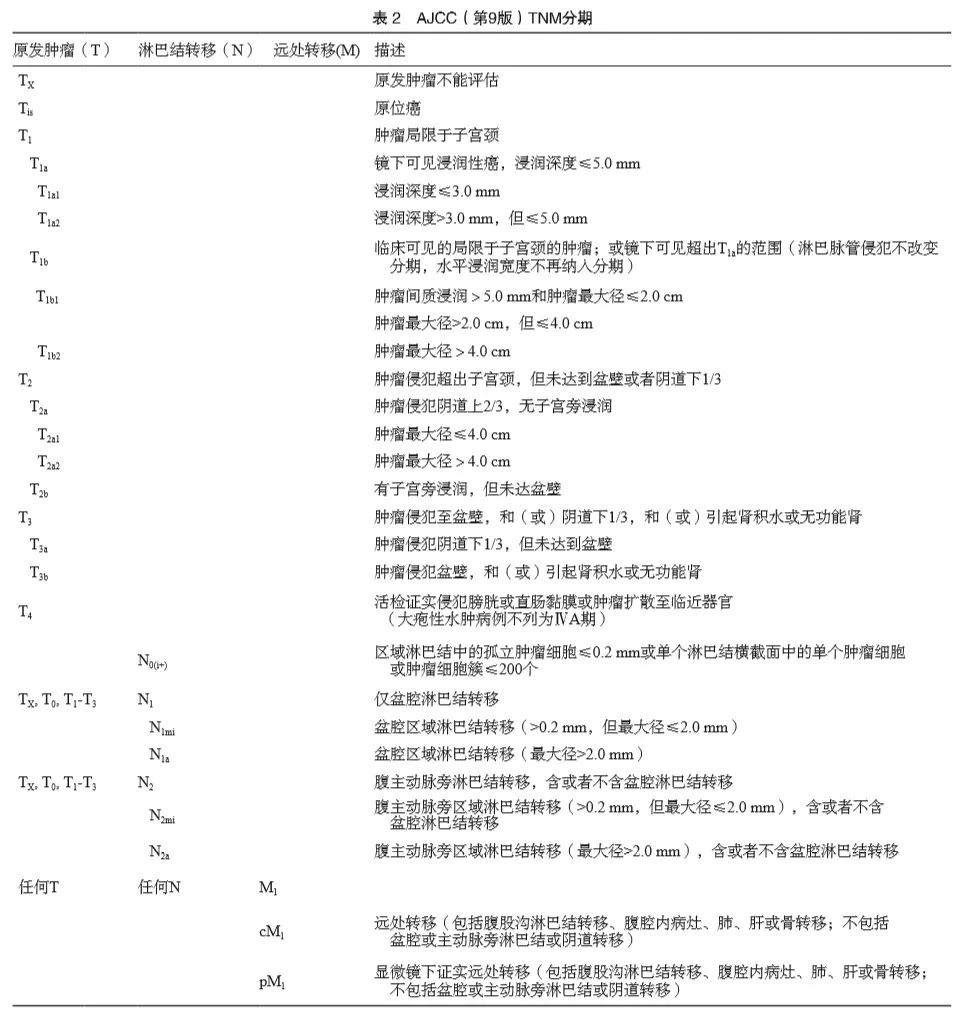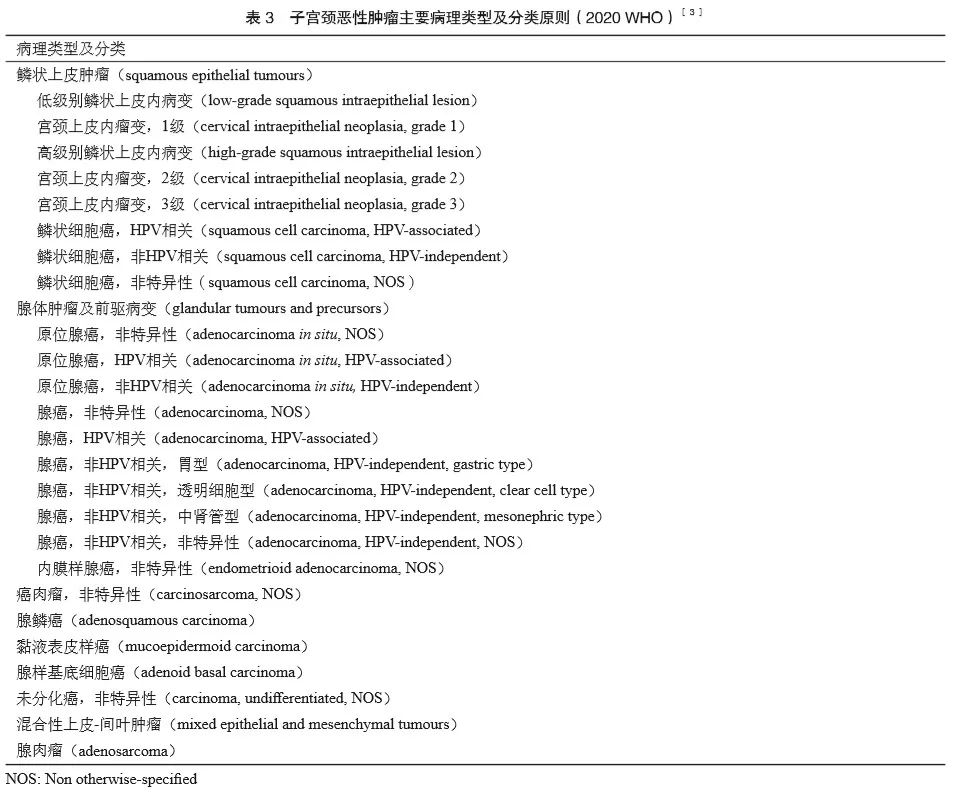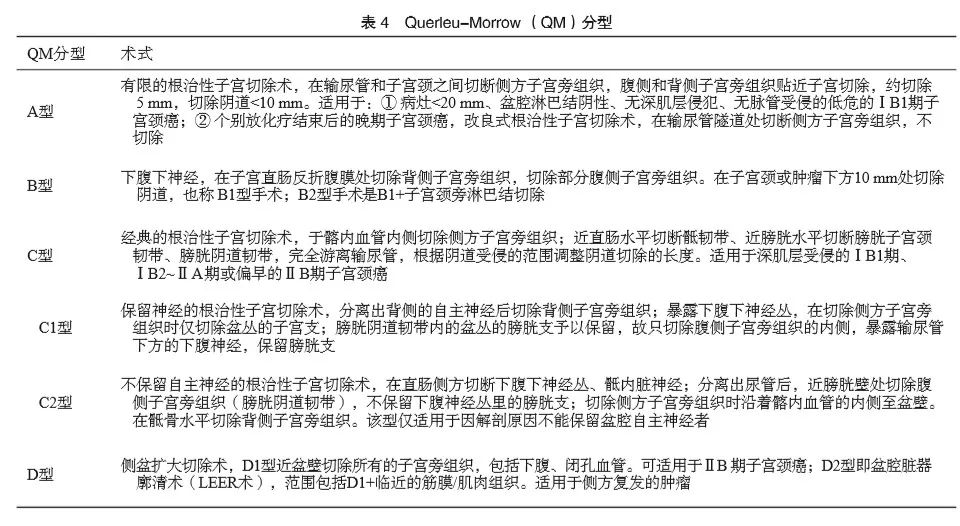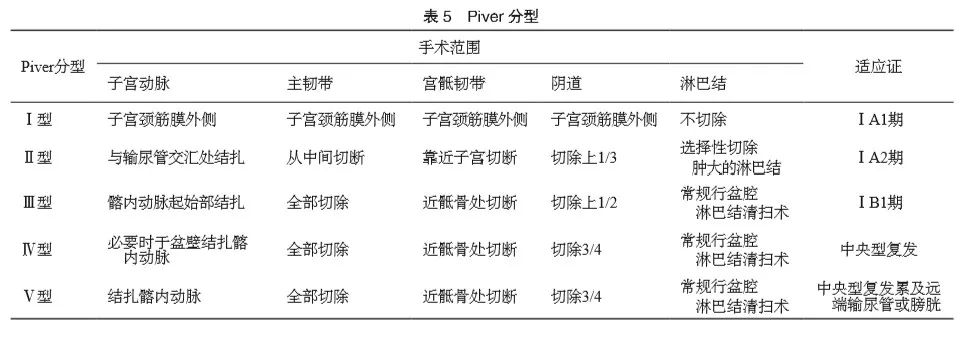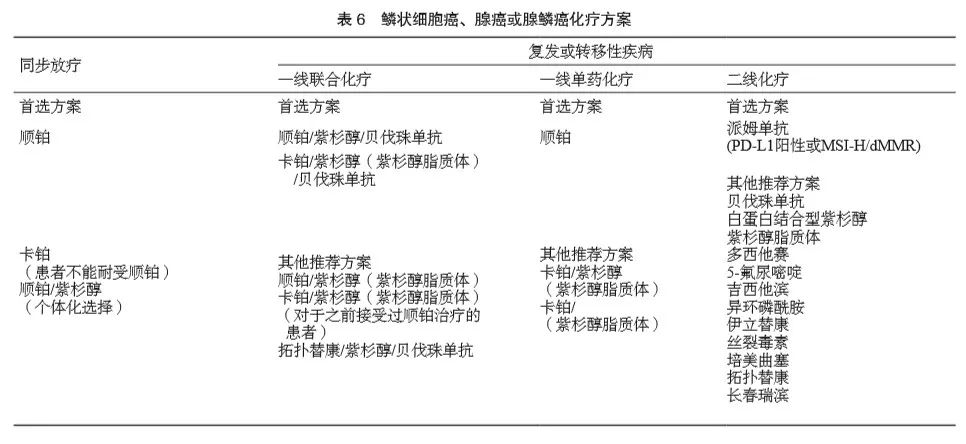OLAWAIYE A B, BAKER T P, WASHINGTON M K, et al. The new (version 9) American Joint Committee on Cancer tumor, node, metastasis staging for cervical cancer[J]. CA Cancer J Clin, 2021. Epub ahead of print.
DELARA R, YANG J, BUCKNER-PETTY S, et al. Surgical or imaging lymph node assessment in locally advanced cervical cancer: a systematic review and meta-analysis[J]. J Gynecol Oncol, 2020, 31(6): e79.
WHO Classification of tumours Editorial Board. Female Genital Tumours. WHO Classification of Tumours, 5th edition, vol. 4[M]. Lyon: IARC Press, 2020: 8.
MINION L E, TEWARI K S. Cervical cancer-state of the science: from angiogenesis blockade to checkpoint inhibition[J]. Gynecol Oncol, 2018, 148(3): 609-621.
CHUNG H C, SCHELLENS J H M, DELORD J P, et al. Pembrolizumab treatment of advanced cervical cancer: updated results from the phase 2 KEYNOTE-158 study[J]. J Clin Oncol, 2018, 36(15_suppl): 5522.
MARABELLE A, LE D T, ASCIERTO P A, et al. Efficacy of pembrolizumab in patients with noncolorectal high microsatellite instability/mismatch repair-deficient cancer: results from the phase II KEYNOTE-158 study[J]. J Clin Oncol, 2020, 38(1): 1-10.
CIBULA D, ABU-RUSTUM N R, BENEDETTI-PANICI P, et al. New classification system of radical hysterectomy: emphasis on a three-dimensional anatomic template for parametrial resection[J]. Gynecol Oncol, 2011, 122(2): 264-268.
RAMIREZ P T, FRUMOVITZ M, PAREJA R, et al. Minimally invasive versus abdominal radical hysterectomy for cervical cancer[J]. N Engl J Med, 2018, 379(20): 1895-1904.
UPPAL S, GEHRIG P A, PENG K, et al. Recurrence rates in patients with cervical cancer treated with abdominal versus minimally invasive radical hysterectomy: a multi-institutional retrospective review study[J]. J Clin Oncol, 2020, 38(10):1030-1040.
WU Y B, LI Z M, WU H Y, et al. Sentinel lymph node biopsy in cervical cancer: a meta-analysis[J]. Mol Clin Oncol, 2013,1(6): 1025-1030.
KADKHODAYAN S, HASANZADEH M, TREGLIA G, et al. Sentinel node biopsy for lymph nodal staging of uterine cervix cancer: a systematic review and meta-analysis of the pertinent literature[J]. Eur J Surg Oncol, 2015, 41(1): 1-20.
FRUMOVITZ M, PLANTE M, LEE P S, et al. The FILM trial: a randomized phase Ⅲ multicenter study assessing near infrared fluorescence in the identification of sentinel lymph nodes (SLN) [J]. Gynecol Oncol, 2018, 149: 7.
LIM K, SMALL W Jr, PORTELANCE L, et al. Consensus guidelines for delineation of clinical target volume for intensity-modulated pelvic radiotherapy for the definitive treatment of cervix cancer[J]. Int J Radiat Oncol Biol Phys, 2011, 79(2): 348-355.
SMALL W Jr, BOSCH W R, HARKENRIDER M M, et al. NRG oncology/RTOG consensus guidelines for delineation of clinical target volume for intensity modulated pelvic radiation therapy in postoperative treatment of endometrial and cervical cancer: an update[J]. Int J Radiat Oncol Biol Phys, 2021, 109(2): 413-424.
KLOPP A H, YEUNG A R, DESHMUKH S, et al. Patient-reported toxicity during pelvic intensity-modulated radiation therapy: NRG oncology-RTOG 1203[J]. J Clin Oncol, 2018, 36(24): 2538-2544.
TAYLOR A, ROCKALL A G, REZNEK R H, et al. Mapping pelvic lymph nodes: guidelines for delineation in intensity-modulated radiotherapy[J]. Int J Radiat Oncol Biol Phys, 2005, 63(5): 1604-1612.
HIGGINSON D S, MORRIS D E, JONES E L, et al. Stereotactic body radiotherapy (SBRT): technological innovation and application in gynecologic oncology[J]. Gynecol Oncol, 2011, 120(3): 404-412.
LANDONI F, MANEO A, COLOMBO A, et al. Randomised study of radical surgery versus radiotherapy for stage Ⅰb-Ⅱa cervical cancer[J]. Lancet, 1997, 350(9077): 535-540.
WHITNEY C W, SAUSE W, BUNDY B N, et al. Randomized comparison of fluorouracil plus cisplatin versus hydroxyurea as an adjunct to radiation therapy in stage ⅡB-ⅣA carcinoma of the cervix with negative para-aortic lymph nodes: a Gynecologic Oncology Group and Southwest Oncology Group study[J]. J Clin Oncol, 1999, 17(5): 1339-1348.
ROSE P G, BUNDY B N, WATKINS E B, et al. Concurrent cisplatin-based radiotherapy and chemotherapy for locally advanced cervical cancer[J]. N Engl J Med, 1999, 340(15):1144-1153.
KEYS H M, BUNDY B N, STEHMAN F B, et al. Cisplatin, radiation, and adjuvant hysterectomy compared with radiation and adjuvant hysterectomy for bulky stage ⅠB cervical carcinoma[J]. N Engl J Med, 1999, 340(15): 1154-1161.
MORRIS M, EIFEL P J, LU J, et al. Pelvic radiation with concurrent chemotherapy compared with pelvic and para-aortic radiation for high-risk cervical cancer[J]. N Engl J Med, 1999, 340(15): 1137-1143.
HUANG H, FENG Y L, WAN T, et al. Effectiveness of sequential chemoradiation vs concurrent chemoradiation or radiation alone in adjuvant treatment after hysterectomy for cervical cancer: the STARS phase 3 randomized clinical trial[J]. JAMA Oncol, 2021, 7(3): 361-369.
TRIFILETTI D M, SWISHER-MCCLURE S, SHOWALTER T N, et al. Postoperative chemoradiation therapy in high-risk cervical cancer: re-evaluating the findings of gynecologic oncology group study 109 in a large, population-based cohort[J]. Int J Radiat Oncol Biol Phys, 2015, 93(5): 1032-1044.
KEYS H M, BUNDY B N, STEHMAN F B, et al. Radiation therapy with and without extrafascial hysterectomy for bulky stage ⅠB cervical carcinoma: a randomized trial of the Gynecologic Oncology Group[J]. Gynecol Oncol, 2003, 89(3): 343-353.
KOKKA F, BRYANT A, BROCKBANK E, et al. Hysterectomy with radiotherapy or chemotherapy or both for women with locally advanced cervical cancer[J]. Cochrane Database Syst Rev, 2015(4): CD010260.
COLOMBO P E, BERTRAND M M, GUTOWSKI M, et al. Total laparoscopic radical hysterectomy for locally advanced cervical carcinoma (stages ⅡB, ⅡA and bulky stages ⅠB) after concurrent chemoradiation therapy: Surgical morbidity and oncological results[J]. Gynecol Oncol, 2009, 114(3): 404-409.
TOUBOUL C, UZAN C, MAUGUEN A, et al. Prognostic factors and morbidities after completion surgery in patients undergoing initial chemoradiation therapy for locally advanced cervical cancer[J]. Oncologist, 2010, 15(4): 405-415.
HUGUET F, COJOCARIU O M, LEVY P, et al. Preoperative concurrent radiation therapy and chemotherapy for bulky stageⅠB2, ⅡA, and ⅡB carcinoma of the uterine cervix with proximal parametrial invasion[J]. Int J Radiat Oncol Biol Phys, 2008, 72(5): 1508-1515.
LEATH C A, STRAUGHN J M. Chemotherapy for advanced and recurrent cervical carcinoma: results from cooperative group trials[J]. Gynecol Oncol, 2013, 129(1): 251-257.
MCLACHLAN J, BOUSSIOS S, OKINES A, et al. The impact of systemic therapy beyond first-line treatment for advanced cervical cancer[J]. Clin Oncol (R Coll Radiol), 2017, 29(3): 153-160.
MARTH C, LANDONI F, MAHNER S, et al. Cervical cancer: ESMO clinical practice guidelines for diagnosis, treatment and follow-up[J]. Ann Oncol, 2018, 29(Suppl 4): iv262.
CIBULA D, PÖTTER R, PLANCHAMP F, et al. The European Society of Gynaecological Oncology/European Society for Radiotherapy and Oncology/European Society of Pathology guidelines for the management of patients with cervical cancer[J]. Int J Gynecol Cancer, 2018, 28(4): 641-655.
SEDLIS A, BUNDY B N, ROTMAN M Z, et al. A randomized trial of pelvic radiation therapy versus no further therapy in selected patients with stage ⅠB carcinoma of the cervix after radical hysterectomy and pelvic lymphadenectomy: a Gynecologic Oncology Group study[J]. Gynecol Oncol, 1999, 73(2): 177-183.
NOH J M, PARK W, KIM Y S, et al. Comparison of clinical outcomes of adenocarcinoma and adenosquamous carcinoma in uterine cervical cancer patients receiving surgical resection followed by radiotherapy: a multicenter retrospective study(KROG 13-10)[J]. Gynecol Oncol, 2014, 132(3): 618-623.
RYU S Y, KIM M H, NAM B H, et al. Intermediate-risk grouping of cervical cancer patients treated with radical hysterectomy: a Korean Gynecologic Oncology Group study[J]. Br J Cancer, 2014, 110(2): 278-285.
DIAZ E S, AOYAMA C, BAQUING M A, et al. Predictors of residual carcinoma or carcinoma-in-situ at hysterectomy following cervical conization with positive margins[J]. Gynecol Oncol, 2014, 132(1): 76-80.

